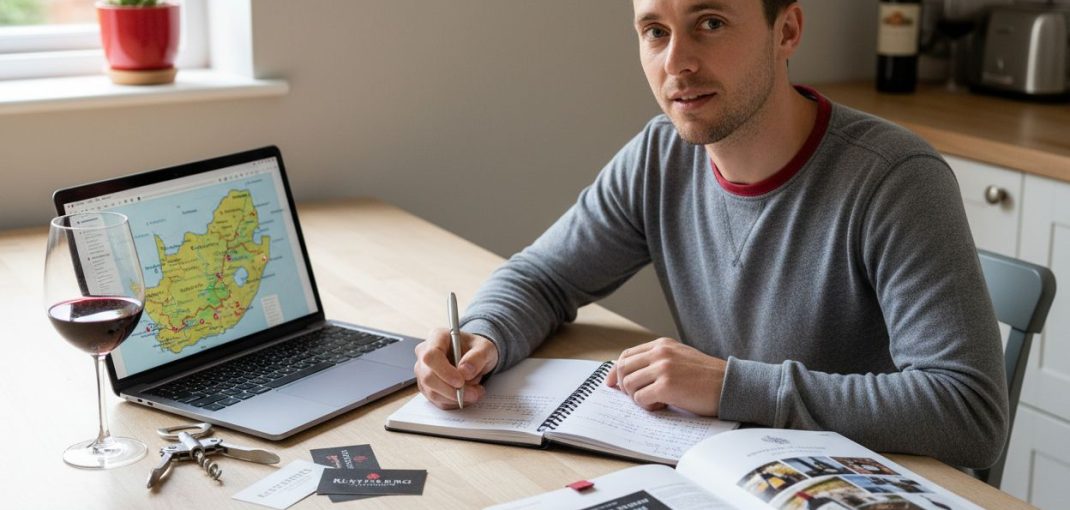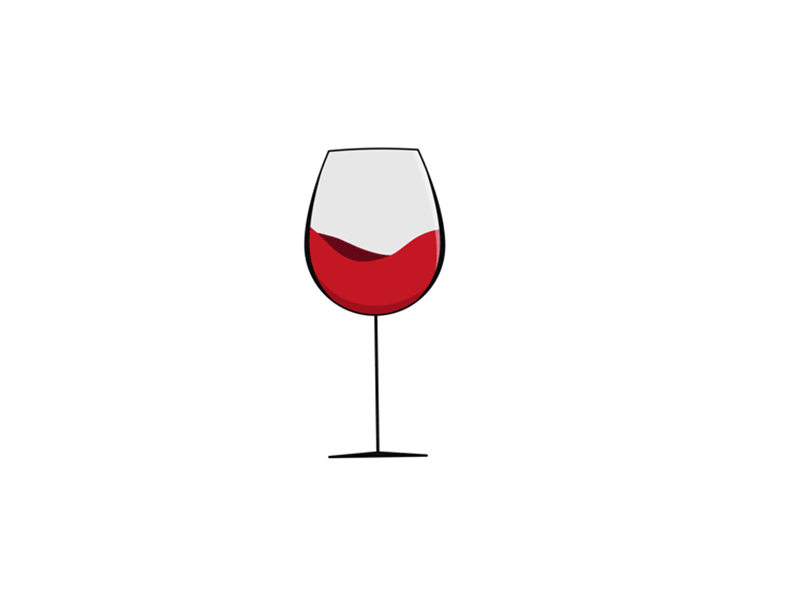Finding remarkable South African wines doesn’t mean buying the most expensive bottle on display. Some of the country’s best-kept secrets come from boutique producers making small batches with incredible care, and
many top-rated wines are available for under R250. Most locals think you need to be a sommelier or spend a fortune to build a serious collection, but that couldn’t be further from the truth. Anyone can build a rewarding wine journey starting right at home with a bit of curiosity and the right approach.
Table of Contents
Quick Summary
| Key Point |
Explanation |
| 1. Research local vineyards and producers |
Explore boutique wineries to discover exceptional, unique wines beyond mainstream options. Engage with communities and attend events for insights. |
| 2. Create a tasting budget for value wines |
Set a monthly budget of R300-R600 to explore quality wines. Focus on discovering value-driven producers for better tasting experiences. |
| 3. Curate a diverse wine selection |
Build a collection that represents various regions and styles of South African wines for a comprehensive tasting journey. |
| 4. Organise a wine tasting event |
Create an inclusive environment for friends to share their feedback and enhance collective learning about wines. |
| 5. Document tasting notes systematically |
Maintain a tasting journal to record wine details and personal impressions, which helps refine future selections and preferences. |
Step 1: Research local vineyards and small-batch producers
Discovering exceptional wines starts with understanding the landscape of local producers and their unique offerings. South Africa boasts a rich winemaking heritage, with
boutique wineries offering extraordinary experiences that go far beyond mainstream selections. Your journey into wine exploration begins with smart, strategic research that uncovers hidden gems.
To successfully navigate the world of small-batch wines, you’ll want to develop a systematic approach. Start by connecting with local wine communities both online and offline. Social media platforms, particularly Instagram and Facebook wine groups dedicated to South African wines, provide excellent starting points. Follow passionate wine enthusiasts, local sommeliers, and vineyard owners who regularly share insights about emerging producers and limited release wines.
Local wine events and tastings are your secret weapon in this research journey. Attend wine festivals, cellar door experiences, and regional wine shows where smaller producers showcase their craft. These events offer direct interaction with winemakers, allowing you to hear their stories, understand their philosophy, and taste wines that rarely make it to standard retail shelves. Pay attention to producers who demonstrate
passion, innovation, and a commitment to unique terroir.
Digital resources can complement your in-person research. Websites like Wine Cellar, WineMag, and local wine blogs frequently highlight smaller producers who are pushing boundaries. Create a dedicated notebook or digital spreadsheet to track interesting wineries, noting their specialities, contact information, and any standout wines you discover. This organised approach transforms casual curiosity into genuine wine expertise.
Remember, researching local vineyards isn’t just about finding good wine—it’s about understanding the stories, people, and passion behind each bottle. Your goal is to build a personal database of producers who represent the true spirit of South African winemaking.
Verification checklist for completing this research step:
- Identified at least 5-7 small-batch wine producers
- Attended minimum one local wine event
- Created a tracking system for discovered wineries
- Tasted wines from at least three new, lesser-known producers
Step 2: Create a tasting budget prioritising value wines
Building a wine tasting budget isn’t about spending the most money—it’s about smart investment and strategic exploration. Your goal is to discover exceptional wines that offer remarkable quality without emptying your wallet.
Learn more about wine tasting strategies that maximise your experience while keeping expenses reasonable.
Start by establishing a realistic monthly wine exploration budget. For most beginners, allocating between R300 and R600 per month provides an excellent balance between quality and affordability. This budget allows you to purchase 2-3 different wines monthly, enabling systematic tasting and learning without financial strain. Break down your budget into strategic categories: one premium wine for deeper study, one mid-range wine for consistent enjoyment, and one experimental wine that challenges your palate.
Value doesn’t always mean cheap—it means finding wines that overdeliver for their price point. South African wine regions like Swartland and Stellenbosch offer incredible value, with many outstanding wines priced between R100 and R250. Look for producers who are passionate about their craft but haven’t yet gained massive commercial recognition. These winemakers often provide exceptional quality at more accessible prices.
Develop a tracking system for your wine purchases. Use a simple spreadsheet or dedicated wine app to record each wine’s details: producer, region, price, tasting notes, and your personal rating. This approach transforms random purchases into a structured learning experience. By documenting your journey, you’ll start recognising patterns in your preferences and identifying consistent value producers.
Consider joining local wine clubs or subscribing to curated monthly wine boxes. These services often provide carefully selected wines at competitive prices, introducing you to producers and styles you might not discover independently. Many clubs offer introductory packages that can significantly reduce per-bottle costs while expanding your wine knowledge.
Verification checklist for creating your tasting budget:
- Established monthly wine exploration budget (R300-R600)
- Identified 3-5 value-driven wine producers
- Created a tracking system for wine purchases
- Explored at least one wine subscription or club option
Step 3: Curate a selection of unique wines from diverse regions
Curating a wine selection is an art that transforms your tasting journey from random sampling to intentional exploration.
Discover the fascinating world of South African wine regions and unlock a treasure trove of diverse flavours waiting to be experienced. Your goal is to build a collection that tells a story—a narrative of terroir, craftsmanship, and South African winemaking excellence.
Diversity is the cornerstone of a compelling wine collection. Begin by mapping out South Africa’s primary wine regions, understanding that each area offers distinct characteristics. Stellenbosch might present robust, structured reds, while Swartland could surprise you with innovative, minimal-intervention wines. Your selection should represent different regions, grape varieties, and winemaking styles, creating a sensory journey across the country’s viticultural landscape.
Start your curation by establishing a balanced representation. Aim for a mix that includes classic varietals and lesser-known gems. Select three to four red wines, two to three white wines, and consider adding a rosé or sparkling wine to round out your collection. This approach ensures versatility and provides a comprehensive tasting experience. Look for wines that challenge your palate—perhaps a Chenin Blanc from an old-vine vineyard or a Syrah from a boutique producer pushing traditional boundaries.
Technology can be your ally in this curation process. Use wine apps and online platforms to track recommendations, read detailed tasting notes, and connect with other wine enthusiasts. Some apps allow you to log your tastings, create wish lists, and discover wines similar to those you’ve enjoyed. Build a digital cellar that reflects your evolving taste and growing knowledge.
Remember that curating is an ongoing process. Your selection should evolve with your understanding and appreciation of wine. Don’t be afraid to take risks—sometimes the most memorable wines are those that surprise you completely. Talk to local wine merchants, attend tastings, and remain curious about new producers and emerging wine styles.
Verification checklist for curating your unique wine selection:
- Selected wines from at least 3-4 different South African regions
- Included minimum 6-7 different wines representing varied styles
- Documented each wine’s origin and unique characteristics
- Created a digital or physical tracking system for your collection
Step 4: Organise a tasting event with friends for feedback
Hosting a wine tasting event transforms your personal exploration into a shared experience of discovery and learning. Discover the perfect wine tasting strategies that will elevate your gathering from a simple drink session to an engaging sensory journey. The goal is to create an environment where everyone feels comfortable sharing honest opinions and expanding their wine knowledge together.
Successful wine tastings are about creating an inclusive, educational atmosphere. Invite a diverse group of friends with varying levels of wine experience—this ensures multiple perspectives and prevents the event from becoming too technical or intimidating. Aim for a group of 4-6 people, which allows for meaningful conversation without overwhelming logistics. Consider sending digital invitations that include a brief overview of what to expect, creating anticipation and setting a collaborative tone.
Prepare your tasting space thoughtfully. You’ll need white tasting glasses, a neutral
palate cleanser like plain crackers or bread, water for hydration, and a clean, well-lit area where everyone can comfortably see and discuss the wines. Create a simple scoring sheet that encourages participants to note aroma, taste, and overall impression. This transforms the tasting from casual drinking to a structured learning experience. Arrange the wines in a logical progression—typically moving from lighter to more robust varieties, which helps palate development and prevents overwhelming the senses.
Encourage open, judgment-free dialogue during the tasting.
The most valuable feedback comes from genuine, personal reactions. Ask specific questions that go beyond simple like or dislike: What memories does this wine evoke? How might you pair this with food? What surprises you about its flavour profile? These prompts help participants engage more deeply and share more meaningful insights.
Consider making the event interactive by introducing a small educational component. Perhaps share a brief story about one of the wines’ origins, or challenge participants to blind taste and guess the region or grape variety. This adds an element of playfulness and keeps the atmosphere light and engaging. Remember, the objective isn’t to create wine experts, but to make wine exploration enjoyable and accessible.
Verification checklist for organising your tasting event:
- Invited 4-6 participants with varied wine experience
- Prepared tasting glasses, scoring sheets, and palate cleansers
- Selected 4-6 diverse wines for tasting
- Created a comfortable, interactive tasting environment
- Documented collective tasting feedback and insights
Step 5: Document your tasting notes and preferences
Documenting your wine tasting journey transforms casual drinking into a purposeful exploration of flavours, aromas, and personal preferences. Discover expert wine tasting techniques that will help you develop a systematic approach to recording your experiences. Your tasting notes are more than just memories—they’re a personal wine encyclopaedia that tracks your evolving palate and helps you make more informed selections in the future.
Create a consistent and comprehensive tasting journal that captures the nuanced details of each wine. Choose a method that works best for you—whether it’s a physical notebook, a dedicated wine app, or a digital spreadsheet. Your documentation should include key elements: wine name, producer, region, vintage, price, and most importantly, your sensory observations. Develop a personal shorthand for describing flavours—compare wines to familiar tastes and experiences that resonate with you personally.
When writing your tasting notes, engage all your senses systematically. Start with visual observations—note the wine’s colour, clarity, and viscosity. Swirl the glass and observe how the wine moves, which reveals information about its body and alcohol content. Smell the wine before tasting, identifying primary aromas like fruits, herbs, or floral notes. During tasting, pay attention to the wine’s initial taste, mid-palate experience, and finish.
Record not just what you taste, but how the wine makes you feel—emotional responses are just as valuable as technical descriptions.
Utilise technology to enhance your note-taking process. Many wine apps offer templated tasting note formats, allowing you to rate wines, track your favourites, and even connect with other wine enthusiasts. Some apps use machine learning to suggest new wines based on your recorded preferences. Consider taking photos of wine labels and creating digital tags or categories that help you quickly reference and remember your experiences.
Don’t be intimidated by professional tasting language. Your notes are personal and should reflect your unique perspective. If a Chenin Blanc reminds you of your grandmother’s apple pie or a Pinotage evokes memories of a summer braai, write that down. These personal connections make wine tasting a rich, meaningful experience that goes beyond mere technical evaluation.
Verification checklist for documenting your tasting notes:
- Created a consistent tasting note system (digital or physical)
- Recorded detailed notes for minimum 10-12 different wines
- Developed personal flavour descriptors and comparison techniques
- Established a method for tracking and categorising wine experiences
Step 6: Build a personal cellar with standout selections
Building a personal wine cellar is an art of curation that celebrates your evolving taste and passion for South African wines.
Explore expert strategies for creating an age-worthy wine collection that tells a story of craftsmanship, terroir, and personal discovery. Your cellar isn’t just storage—it’s a living archive of your wine journey, representing the most remarkable discoveries from your tasting adventures.
Start with a strategic approach to selection and storage. Begin by understanding your available space and creating proper storage conditions. Not everyone has a dedicated wine room—many beginners start with a small wine fridge, a cool kitchen cupboard, or a dedicated section in a closet. The key is maintaining consistent temperature (around 13-15 degrees Celsius) and minimal light exposure. Invest in a basic wine rack or storage solution that allows bottles to rest horizontally, keeping corks moist and preventing oxidation.
Curate your collection with intention, focusing on diversity and potential. Select wines that represent different regions, grape varieties, and styles of winemaking. Aim for a balanced collection that includes wines for immediate enjoyment and those with ageing potential. South African wines like Syrah from Swartland, Chenin Blanc from older vines, and structured red blends often provide excellent ageing opportunities. Consider purchasing wines in small batches—two to three bottles of each selection—which allows you to taste one now and save others for future comparison.
Develop a systematic approach to tracking your cellar’s evolution. Create a digital or physical inventory that documents each wine’s details: purchase date, expected drinking window, storage location, and personal tasting notes. This documentation transforms your cellar from a random collection into a purposeful exploration of wine. Use wine management apps or spreadsheets to log your inventory, helping you make informed decisions about when to drink each bottle and identify gaps in your collection.
Remember that building a cellar is a gradual process.
Your collection will grow and change as your palate develops. Don’t feel pressured to acquire expensive or rare wines immediately. Focus on quality, personal enjoyment, and the stories behind each bottle. Talk to local wine merchants, attend tastings, and remain open to recommendations from trusted sources. Your cellar should reflect your unique wine journey—a personal museum of flavours and memories.
Below is a checklist table to help you verify completion of each key step in your beginner wine journey.
| Step |
Verification Criteria |
| Research small-batch producers |
Identified 5-7 producers, attended one local event, tracked wineries, tasted from 3 new producers |
| Create tasting budget |
Set R300-R600/month, identified 3-5 value producers, created tracking system, explored club option |
| Curate unique selection |
Chose wines from 3-4 regions, included 6-7 varied styles, documented origins and traits, made tracking system |
| Organise tasting event |
Invited 4-6 friends, prepared glasses and sheets, selected 4-6 wines, created comfortable space, documented group feedback |
| Document tasting notes |
Made note system, logged 10-12 wines, developed flavour descriptors, set up tracking/categorising method |
| Build personal cellar |
Organised storage conditions, selected 10-15 diverse wines, made inventory, picked 3-4 wines with ageing potential |
Verification checklist for building your personal cellar:
- Established proper wine storage conditions
- Selected minimum 10-15 diverse wines for collection
- Created inventory tracking system
- Identified at least 3-4 wines with ageing potential
Take the Next Step in Your Wine Discovery Journey
You have started building your knowledge, created tasting budgets, curated your first selection, and shared real moments with friends. Now the real challenge is finding those character-rich, small-batch wines that are off the beaten path—without the overwhelm or fuss that big retailers bring. Bringing new stories and unique flavours to your table takes more than luck. It takes a trusted source that celebrates individual vineyards and personal discovery, just as you are aiming for in your wine tasting journey.
At Vinty, we believe wine should never feel intimidating or commercial. Whether you want bold reds, refreshing whites or special blends for your own cellar, you will find rewarding surprises that fit your budget and grow your confidence. Visit
Vinty today to browse the best small-batch and Vinty Collection wines.
Frequently Asked Questions
How can I find local vineyards that produce unique wines?
Research local wineries by connecting with wine communities online, attending local wine events, and using digital resources to uncover hidden gems in your area.
What should I include in my wine tasting budget?
Establish a monthly budget that allows for purchasing 2-3 diverse wines, balancing premium, mid-range, and experimental selections to enhance your tasting experience.
How do I document my wine tasting notes effectively?
Create a consistent tasting journal that captures key information like wine name, producer, vintage, and your sensory observations, using a method that works best for you, such as digital apps or notebooks.
What factors should I consider when building a personal wine cellar?
Focus on proper storage conditions, diversity in your selection, balanced representation of styles, and tracking your inventory to create a purposeful collection that reflects your evolving taste.
Recommended







